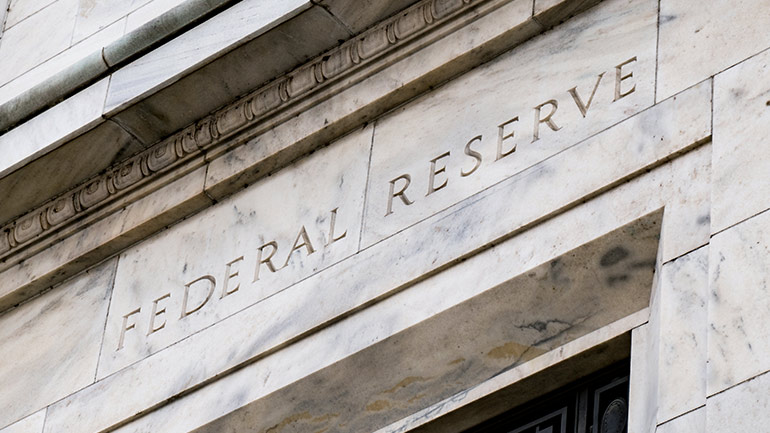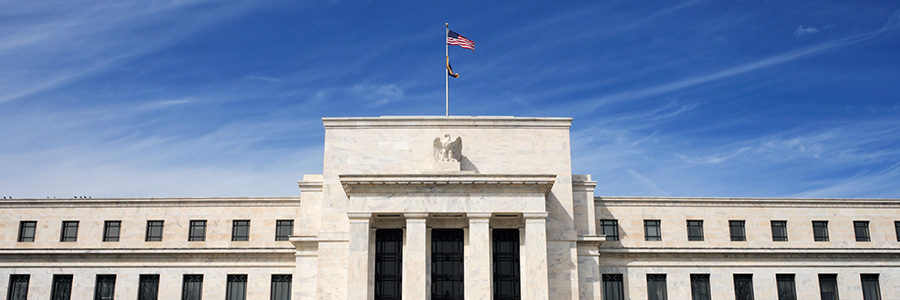May FOMC: This Is Fine?
By: Oscar Muñoz
May 12, 2023 - 4 minutes
The FOMC delivered, as expected, a 25bp increase in the fed funds target range to 5.00%-5.25% (TD & consensus: +25bp). Fed Chair Powell cited continued high core inflation and a strong labor market, as a motivation for the Committee to again increase the fed funds rate. However, both the statement and the Chair's press conference did acknowledge that tighter credit conditions will slow economic activity going forward, more explicitly than was the case at the March FOMC meeting, and that is a factor in assessing the appropriately restrictive level of the Fed funds rate.
It is clear that the Fed is struggling with how to balance the ongoing tightening of credit conditions with the persistently above-target inflation dynamic in the data. However, bank lending data suggests that any outsized credit tightening over and above that implied by the Fed's policy tightening does not seem to have occurred just yet. Diving into the details underpinning these trends, slowing bank lending is mostly concentrated in credit extension to corporations, largely driven by contracting credit extension by the smaller banks.
From an economy-wide perspective, direct bank lending constitutes a relatively low percentage of the businesses' liabilities. In addition, there are no signs that financial stress has become more systematic. Therefore, the signs of an impending credit crunch aren't really there yet, and the Fed has not made up its mind either
Then there is the data on inflation and the labor market. The recent Q1 ECI release made clear that wage growth deceleration has been a lot slower than anticipated. In the end, wage growth remains very elevated when compared with the 3%-3.5% range that is consistent with the Fed's 2% inflation target, which was also acknowledged by Chair Powell at the post-meeting press conference. Turning to inflation, the March PCE report showed a pickup in the momentum of core inflation rates owing to a combination of persistently elevated core services inflation and core goods prices no longer providing a disinflationary impulse.
In particular the "core-of-core" inflation measure, core services excl. housing PCE inflation, earmarked by the Fed as an important guide for its rate setting policy, shows no sign whatsoever of slowing towards a level in line with the Fed's 2% target. It suggests that underlying inflationary pressures remain persistently elevated. Indeed, Chair Powell remarked with regard to this inflation gauge " [...] you look at nonhousing services, it really hasn't moved much. And it is quite stable. And so we think [...] demand will have to weaken a little bit and labor market conditions will have to soften a bit more to begin to see progress there." A strong labor market will keep core PCE inflation sticky in 2023, ending the year just below 4%, through both elevated wage costs and solid aggregate demand.
Are we done with hiking now?
The FOMC is nearing the end of this tightening cycle, but committee members still must make up their minds with regard to the appropriate peak rate. They are concerned about the uncertain impact of tightening credit conditions, but also are taken aback by the stubbornly elevated rates of core inflation, which seem to be stabilizing at above-target levels. If anything, this will make the Fed even more data dependent. Chair Powell went out of his way to suggest that additional firming was not off the table just yet. The Fed will closely monitor data on inflation and the labor market between now and the June meeting to assess whether a 5.25% peak rate is appropriate or not. We therefore maintain our call for a final 25bp rate hike in June, but compared to before the meeting the odds of the June rate increase have dropped. It really will depend on the data flow leading up to the June meeting whether this final rate hike will come to fruition or not.
Beyond the June meeting the Fed's game plan is to stay put at terminal for as long as necessary ("high for long"). With a recession likely to start in Q4 and unemployment climbing to 4% in that quarter, we expect the Fed to cut the fed funds rate by a modest 25bp in December as core inflation will barely be below 4% in Q4. As most of the fallout from our projected recession is concentrated in 2024, with unemployment rising further from 4% in 2023 Q4 to 5.5% in 2024 Q4, the resulting disinflation will allow the Fed to be engaged in more aggressive easing with a total of 275bp rate cuts towards a trough Fed funds rate of 2.75% (upper bound) in 2024.
However, this assumes a gradual return of long-term inflation trends in line with the Fed's 2% target by the end of 2025. Would this not be the case, as inflation trends currently seem to suggest, disinflation in 2024 will likely be a lot more modest despite the recession, posing a dilemma for the Fed where it will have to choose between its inflation target or aggressive easing to deal with rising unemployment. This could lead to less easing than expected in 2024. Therefore, the risks around our projected total of rate cuts from December 2023 onwards are, for now, skewed to the downside towards less than 275bp worth of cuts.
Subscribing Clients can access full report: May FOMC: This Is Fine? on the TD Securities Market Alpha Portal

Vice President and U.S. Macro Strategist, TD Securities

Vice President and U.S. Macro Strategist, TD Securities

Vice President and U.S. Macro Strategist, TD Securities




